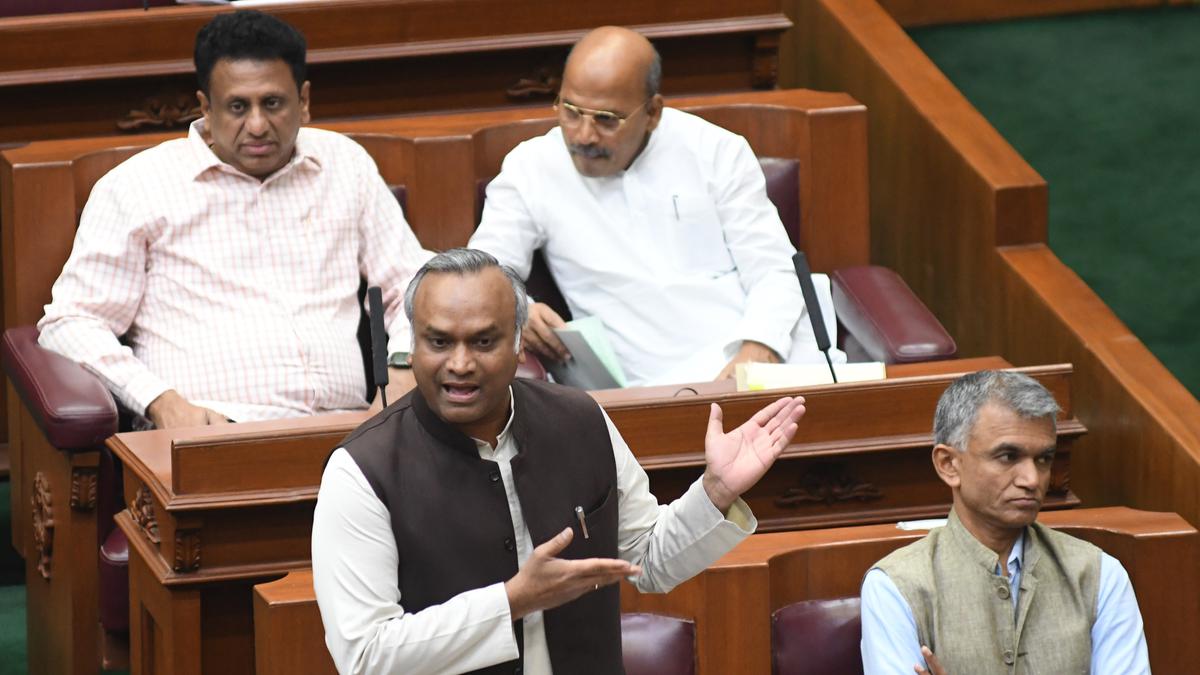
Yet another Centre-state row unfolds as Centre says Karnataka yet to submit proposal on increasing MGNREGA man-days
The Hindu
Karnataka has petitioned Centre multiple times to increase MGNREGA man-days in drought-hit areas from 100 to 150.
Yet another Centre-State controversy has surfaced with the Centre saying that Karnataka is yet to submit any proposal seeking an increase in the number of man-days under the MGNREGA from 100 to 150 in drought-hit areas though the State has petitioned the Centre in this regard multiple times.
The issue has come to light with the Centre informing Sumalatha, MP, in a written reply in the Lok Sabha on December 12 that it has not received any proposal from Karnataka.
The issue came to the fore on Thursday with Congress member K.M. Shivalinge Gowda raising it in the Assembly during the Zero Hour.
Taking exception to this, Karnataka Rural Development and Panchayat Raj Minister Priyank Kharge described the reply provided by Union Rural Development Minister Giriraj Singh in the Lok Sabha as “wrong and false”.
Seeking to set the records straight, Mr. Kharge said the Karnataka RDPR Commissioner had written to the Union Rural Development Minister on September 14 seeking an increase in the man-days. Again, the Karnataka RDPR Principal Secretary had written to the Secretary of the Union Rural Development Minister in this regard on September 16. In fact, he himself (Mr. Kharge) had written to Mr. Giriraj Singh in this regard on September 20 besides sending a reminder to him on October 18, the Minister said.
Mr. Giriraj Singh replied to him on October 31, acknowledging the letter correspondences and also informing the State that its request for increasing the man-days by 50 days was being examined, Mr. Kharge said.
He said though he had visited Delhi twice, he could not get an appointment with the Union Rural Development Minister to personally meet him.

Hampi, the UNESCO-recognised historical site, was the capital of the Vijayanagara empire from 1336 to 1565. Foreign travellers from Persia, Europe and other parts of the world have chronicled the wealth of the place and the unique cultural mores of this kingdom built on the banks of the Tungabhadra river. There are fine descriptions to be found of its temples, farms, markets and trading links, remnants of which one can see in the ruins now. The Literature, architecture of this era continue inspire awe.

Unfurling the zine handed to us at the start of the walk, we use brightly-coloured markers to draw squiggly cables across the page, starting from a sepia-toned vintage photograph of the telegraph office. Iz, who goes by the pronouns they/them, explains, “This building is still standing, though it shut down in 2013,” they say, pointing out that telegraphy, which started in Bengaluru in 1854, was an instrument of colonial power and control. “The British colonised lands via telegraph cables, something known as the All Red Line.”









